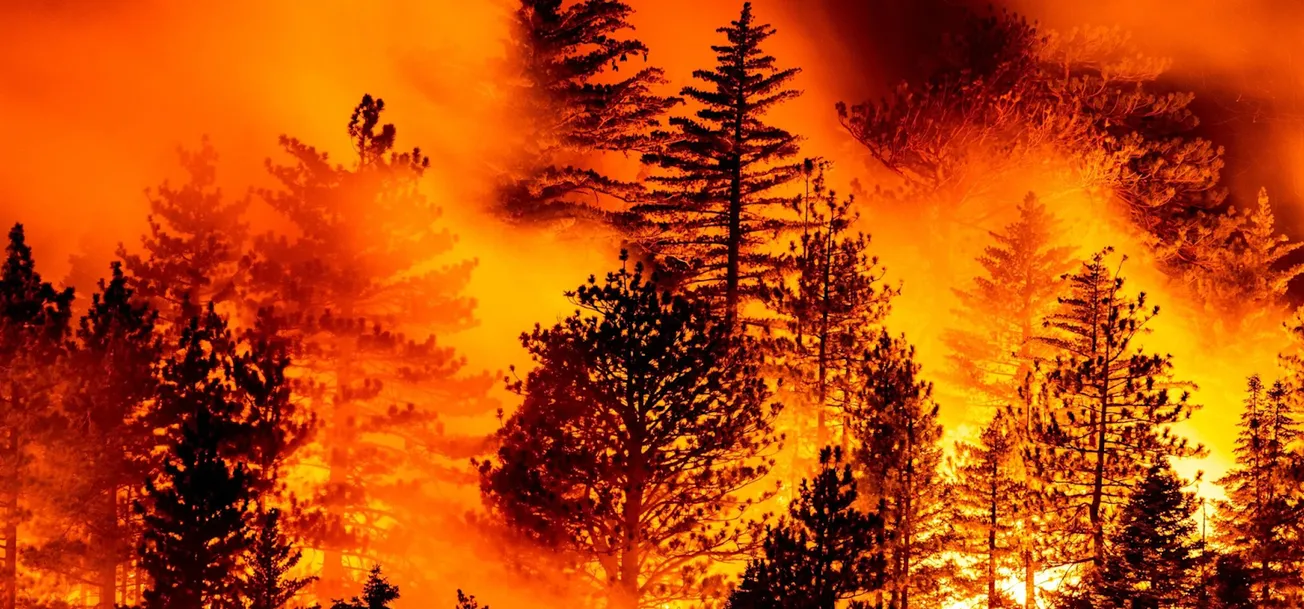Table of Contents
Of the great lessons from the last 50 years of U.S. history, we should have learned by now that declaring war against an abstract noun is a terrible idea. Whether in The War on Drugs, The War on Poverty, or The War on Terror, the noun always wins.
So naturally, politicians in California have spent the last century waging another awful policy war: The War on Fire, in which they tried to end the natural cycle of fire in California by putting out fires.
The result? Well, more fire. A lot more.
Fire suppression leads to a buildup in dry fuel on the ground. Without human intervention, wildfire would burn this dry fuel in California’s forests and chaparral biomes. That keeps the ecosystem healthy. Wildfire is as much a part of nature in California as are the Sierra-Nevada mountains or the Pacific Coast. In prehistoric times, millions of acres burned each year.
Today, California burns only a fraction of the land needed to reduce wildfire risk to a tolerable level, sometimes as few as ten-thousand acres per year. The deficit has turned entire swathes of the California wilderness into a ticking time bomb.
This year, the bomb went off. California leaders and national news media have mostly blamed the crisis on climate change, an important issue that politicians are using as a scapegoat.
Hotter and drier conditions around the world, worsening from climate change, are a major problem. If we do nothing, it will mean more -- and worse -- wildfires.
But to claim that a modest temperature increase from climate change is the principal cause of the fires burning today is absolutely wrong.
California is on fire precisely because of its War on Fire. It is a war that ignores science and history, and we’re all paying the price.
Indigenous peoples were burning the forests of California long before Europeans arrived, to promote ecological diversity and support human habitation. Only in the 20th century did fire fall out of favor in the American West, when coastal Californians began to move into the wilderness.
The movers built wooden houses in forests that would normally be burned in wildfire every few decades. They brought new power and gas lines. They also brought an army of bureaucrats and legislators, ready to suppress any and all fire near their new communities, even as they massively increased fire risk.
The War on Fire’s bureaucrats wrote burdensome regulations and laws hindering burns on state land. They established ‘air quality boards’ and onerous approval processes to prevent people from burning on their own land.
The rationale of the war was straightforward and empathetic: fire is bad -- it destroys homes and kills people. To protect property and life is a noble goal, but The War on Fire has completely and predictably failed to stop the fires that actually matter: the big ones. When we extinguish all the small fires which are not destructive, we substantially increase the risk of large fires which are.
Fallen power lines, lightning, and a few gender-reveal parties gone wrong set off massive, deadly, and destructive fires this summer. Due to similar incidents in 2018, California has seen record wildfires multiple years in a row.
So, I suggest that California policymakers carrying the banner of Science™ ought to listen to some actual science. Here’s what we can do to start:
- Fund more controlled burns and ease environmental restrictions preventing private landowners from conducting them. Minor effects on air quality and wildlife from controlled burns must be tolerated, or else we will face much worse in uncontrollable burns.
- Spend more money on
raking the forest floormechanically clearing dry fuel from forest and brush. Along with controlled burns, this is a proven technique that we can use to manage the forests, especially in places where people do live, and reduce risk of especially destructive fires. - Reduce local control over the approval process, which stops nearly half of the controlled burns planned! California can’t let a small group of citizens who live in the wilderness hold the entire state hostage by shutting down controlled burns.
Unfortunately, these scientific solutions have not caught the attention of Gavin Newsom or anybody else with the power to implement them. He and other leaders are far more focused on hand-waving about the climate. Worldwide decarbonization is an excellent goal. But California is on fire right now, and we need serious proposals from policymakers.
Let’s check in with Gavin and see what his plan is…
That’s right. “VOTE.”
Hey, Governor Hairgel! California already voted for you!
Gavin Newsom governs California with a Democratic supermajority. He can implement whatever policies he and his party want. They have controlled policymaking in the Golden State for nearly a quarter century, and “vote for us again!” is the best they can come up with?
They have the scientific studies. They have the recommendations of their own commissions. Their citizens cannot breathe outside. They do nothing.
It’s time to wake up and smell the wildfire. A century of policy failure has turned California into an orange hellscape and state leaders can’t do anything but blame others. Governor Newsom and the rest of Sacramento ought to stop with the excuses and get to work -- or step aside for people who will!









